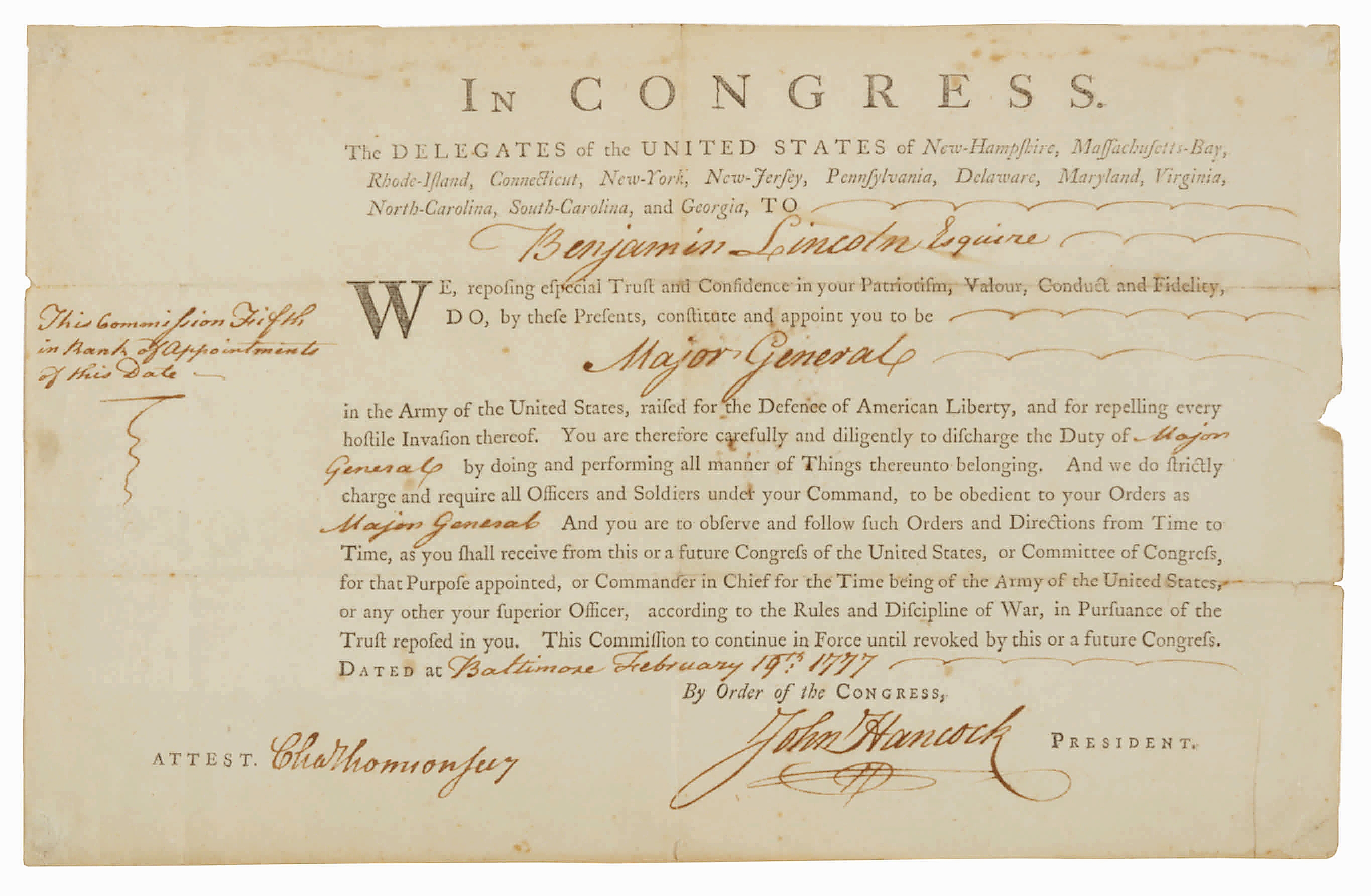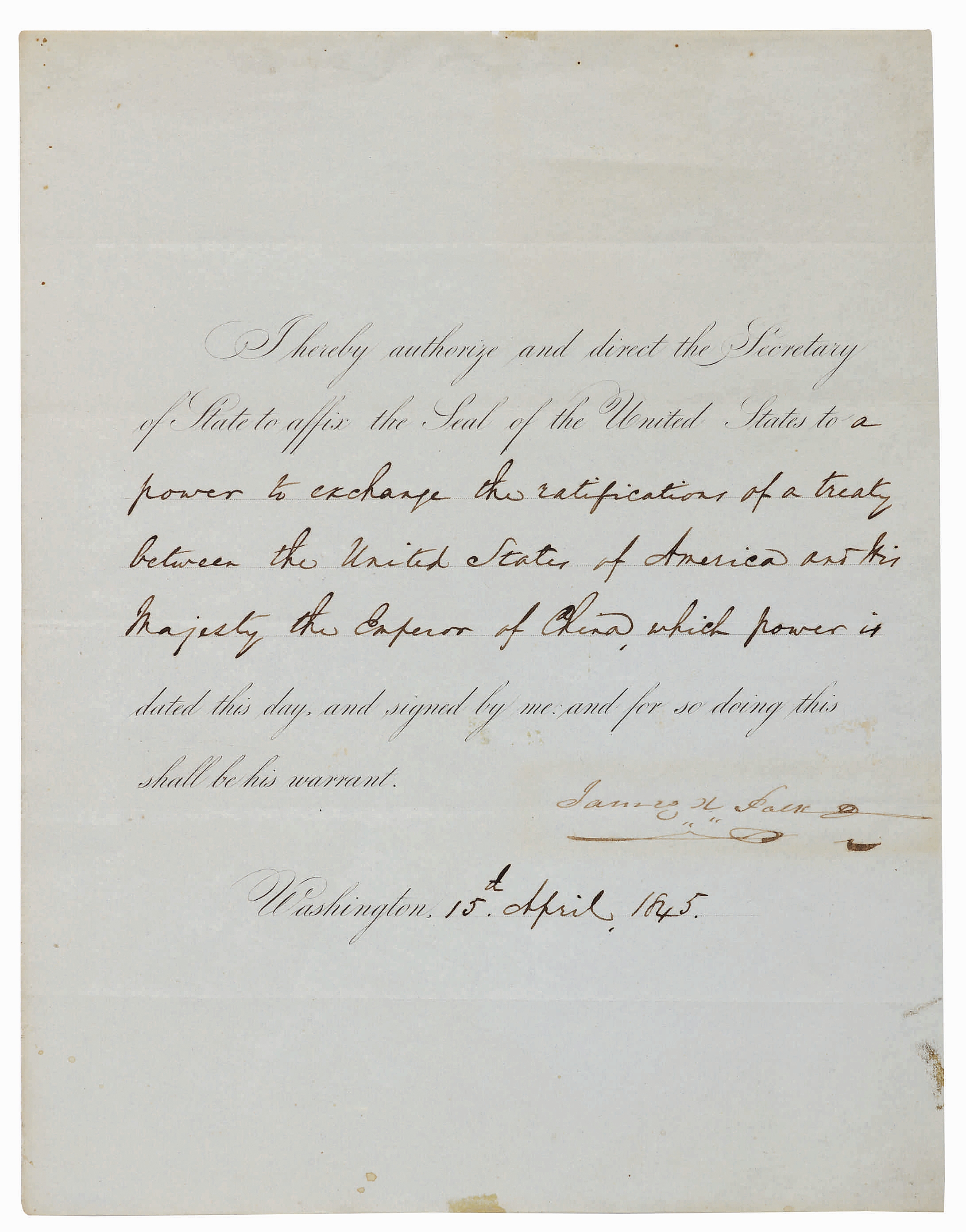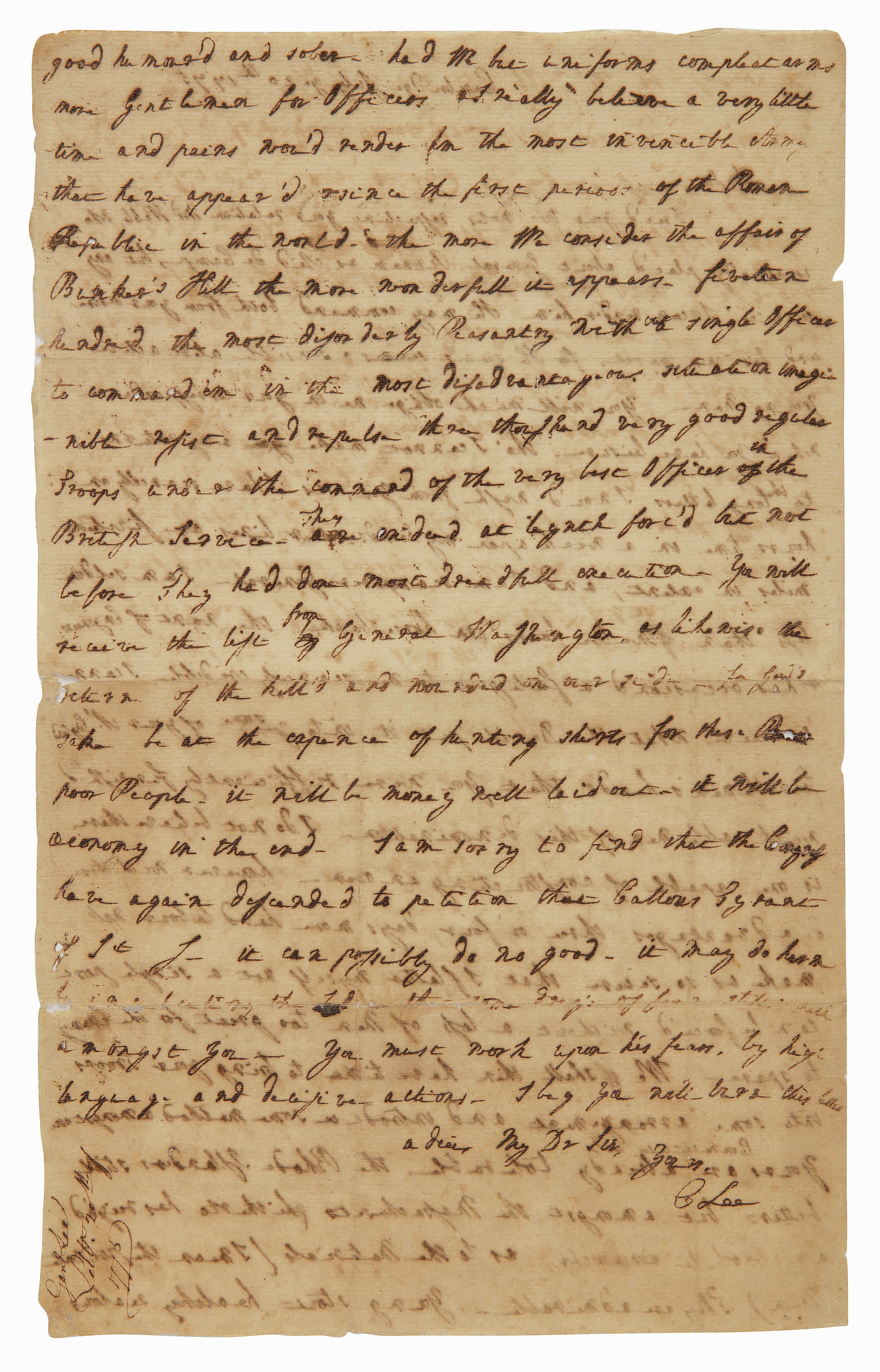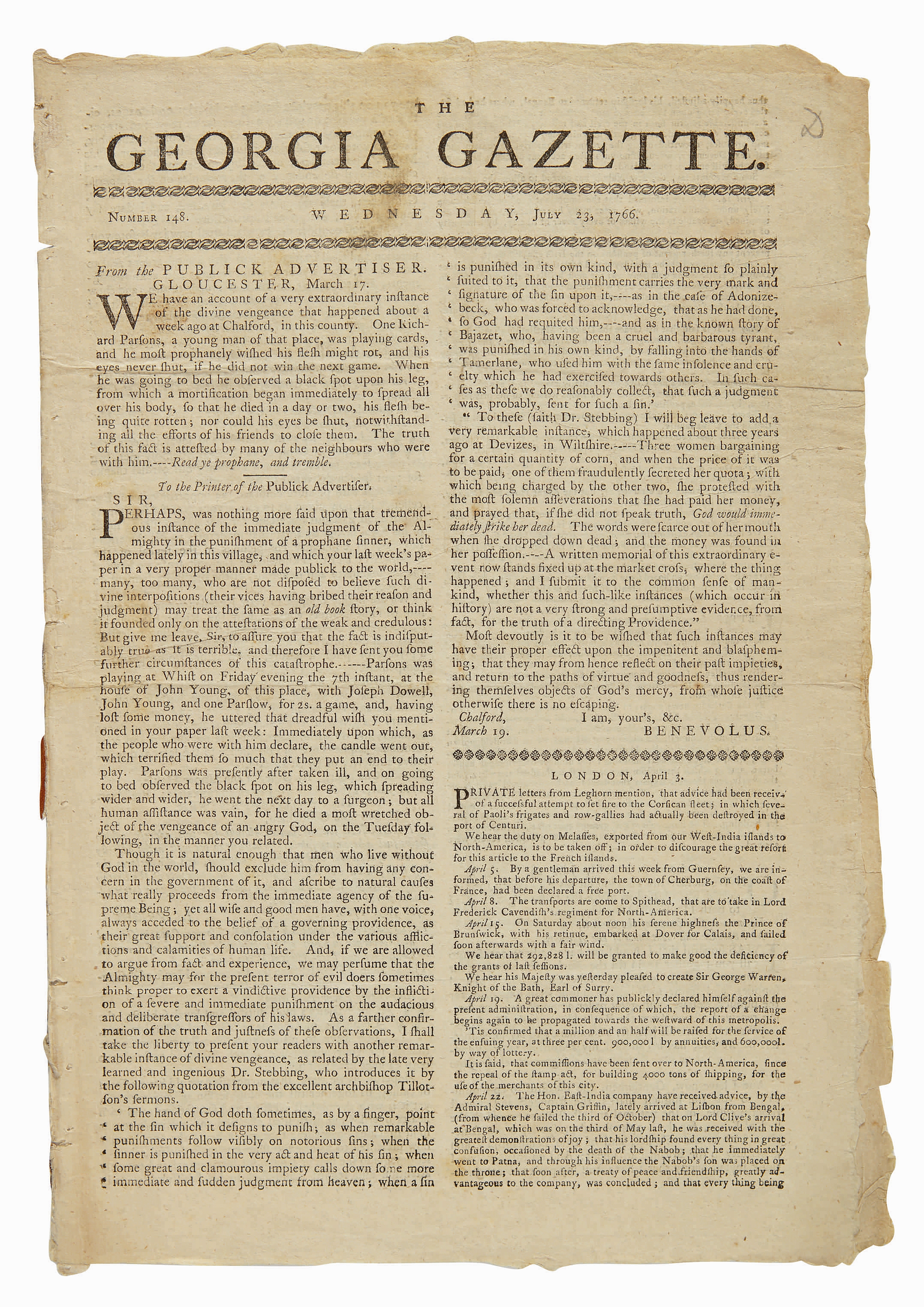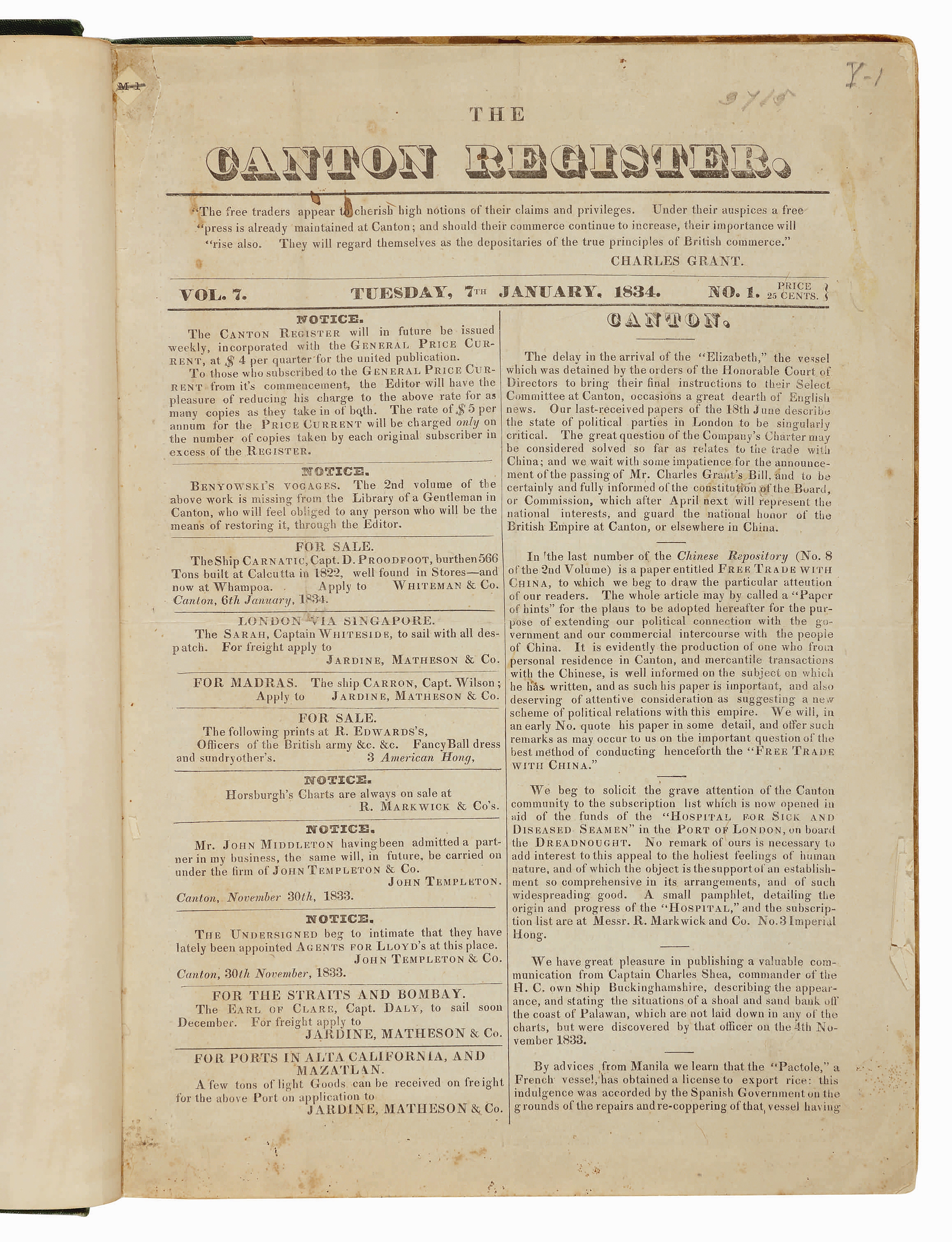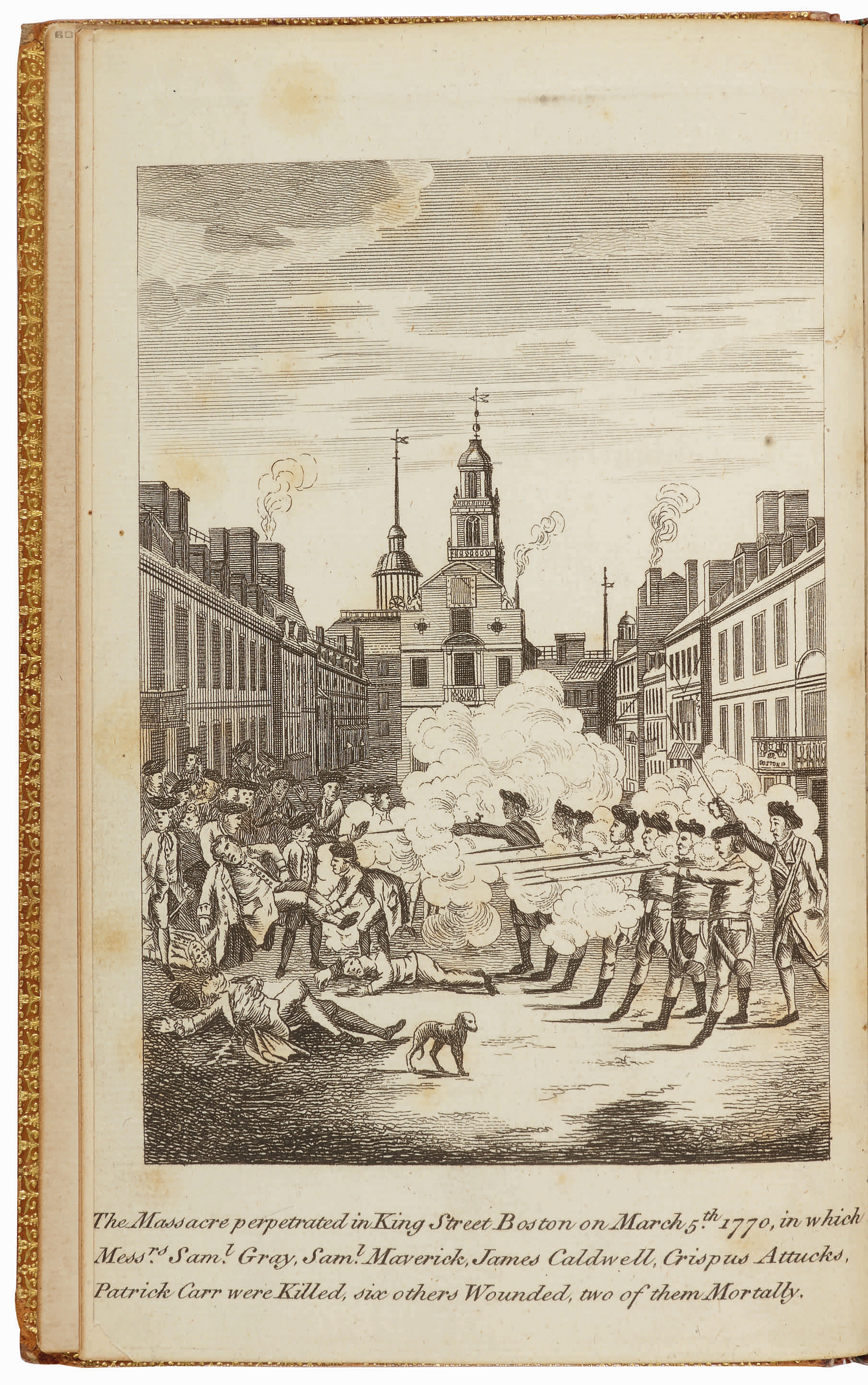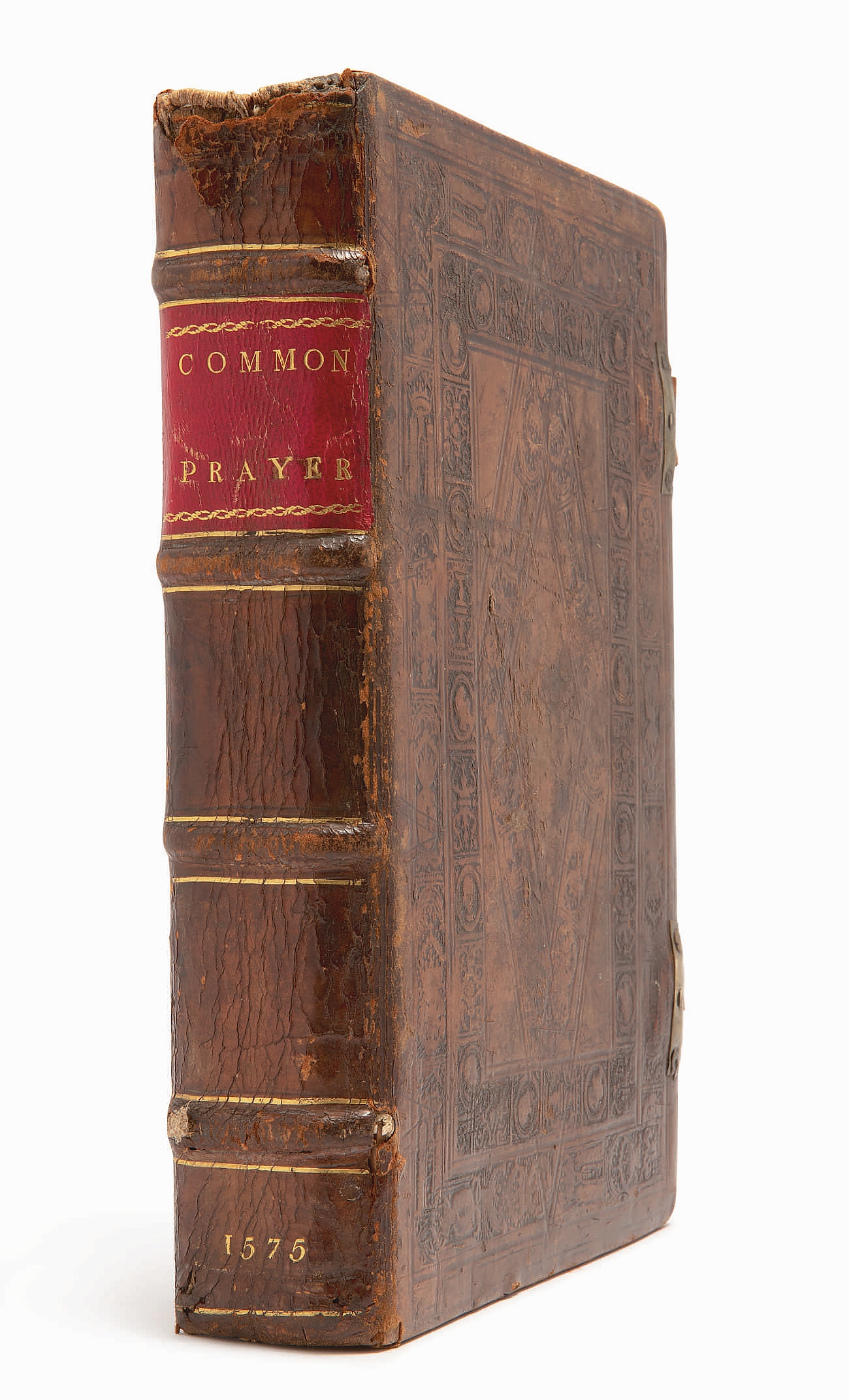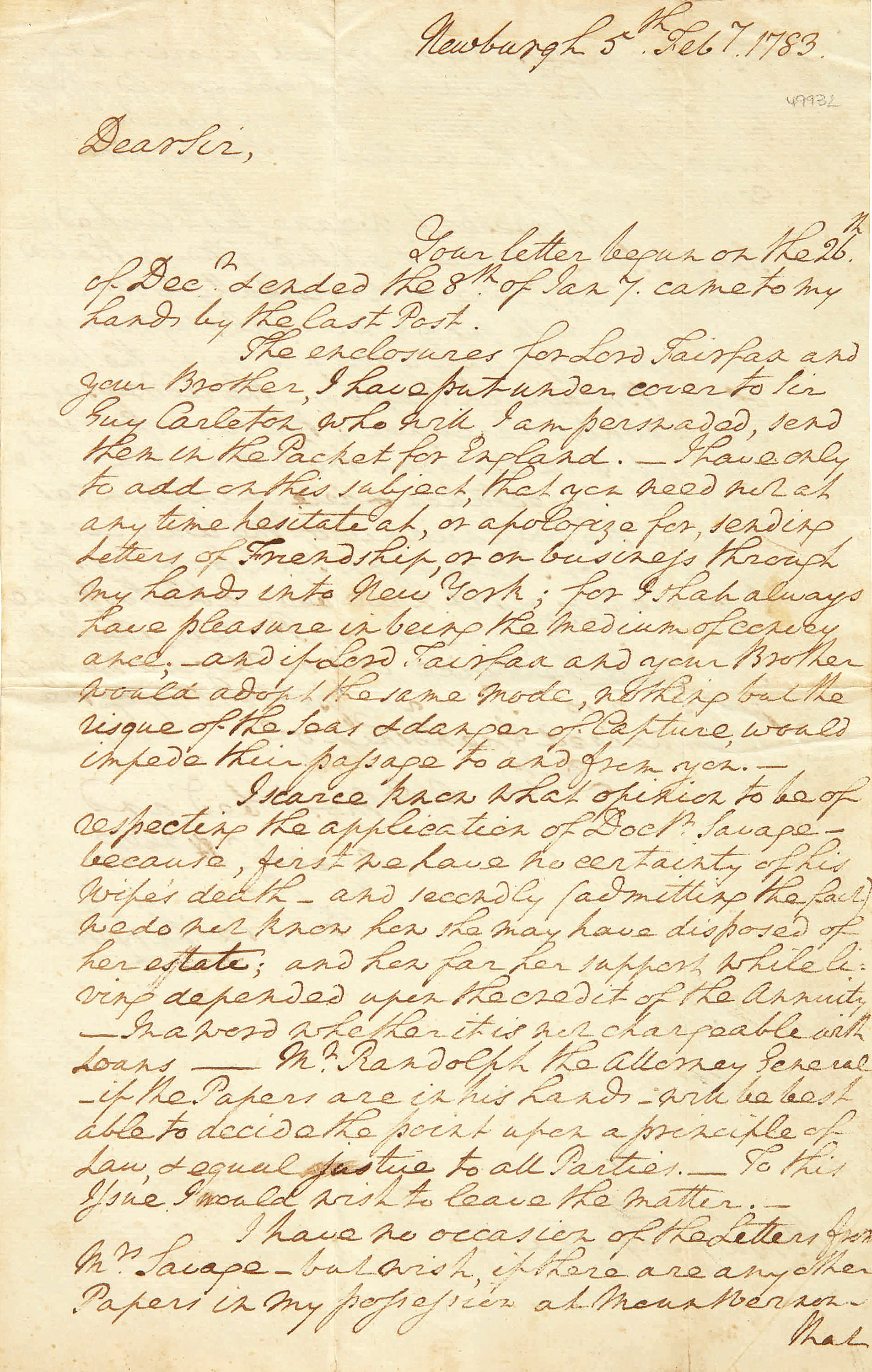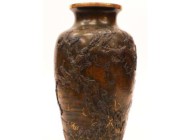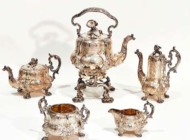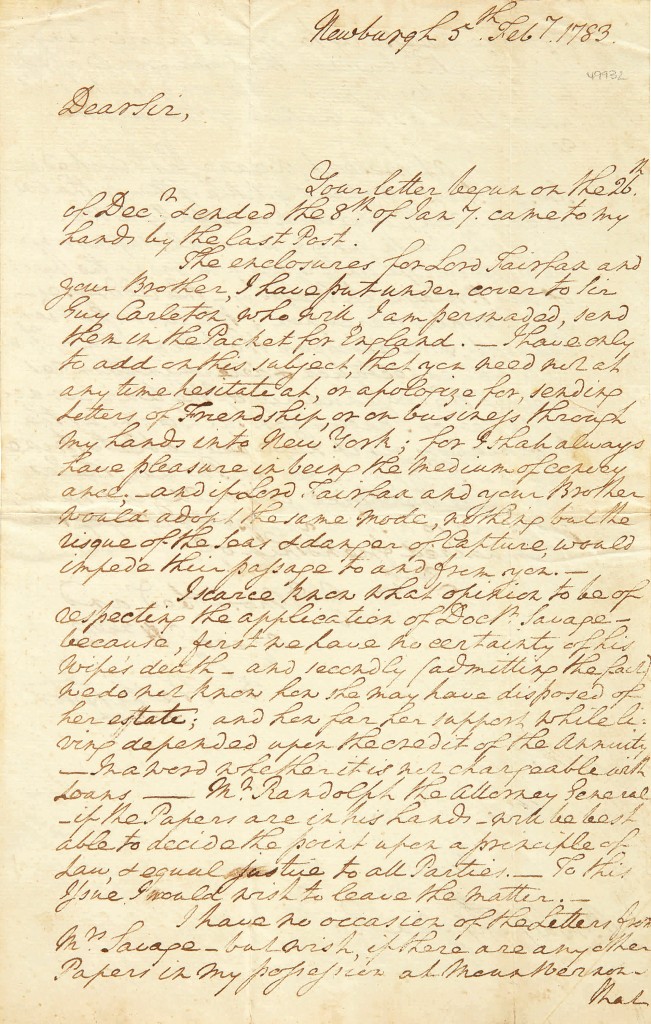
Leading the sale was this autograph letter signed (“Go: Washington”) as Continental Commander to Bryan Fairfax, hoping for good news regarding the peace negotiations to end the Revolutionary War — not knowing the preliminary articles of peace had been signed two weeks earlier. The two-page document (one page shown) sold for $60,000.
Review by W.A. Demers, Photos Courtesy Sotheby’s
NEW YORK CITY — Historical paper king Eric C. Caren was 4,000 miles away in Costa Rica when Sotheby’s conducted a July 21 auction of his collection. From that vantage point — he and his girlfriend had caught the last plane out of the United States before the coronavirus lockdown — he told Antiques and the Arts Weekly before the sale that he was gratified not only to be having the eighth such sale of his How History Unfolds collection but that he had also teamed up with a world-renowned authentication firm to precertify each item crossing the block.
“People come up to me all the time and say, ‘So, you’ve sold your collection,’” Eric C. Caren told Antiques and The Arts Weekly. “No, I tell them, I’m still actively collecting, although I happily put this collection together.” The 115 lots of historical paper that came up in Sotheby’s books and manuscripts auction represented but a small percentage of the 1-million-piece private inventory for the dealer, formerly of Westchester County, N.Y., and widely recognized on the trade show circuit. “I’m proud that this is my eighth single-owner auction,” he said, his contribution in this sale ranging from the age of Columbus to the computer age and presenting a broad selection of categories and genres.
In these days of COVID-19 when the majority of auctions, such as this one, are being conducted online, Caren said he is doubly proud of the tie-up he made with Professional Sports Authenticator (PSA), the world’s largest third-party sports card authentication service and increasingly the acknowledged leader in authenticating even non-sports items that come up for bid. “Before consigning to this sale, I reached out to the president of PSA to register and precertify every single item. It’s a double branding with Sotheby’s and PSA and it’s really a way to permanently record provenance,” he said.
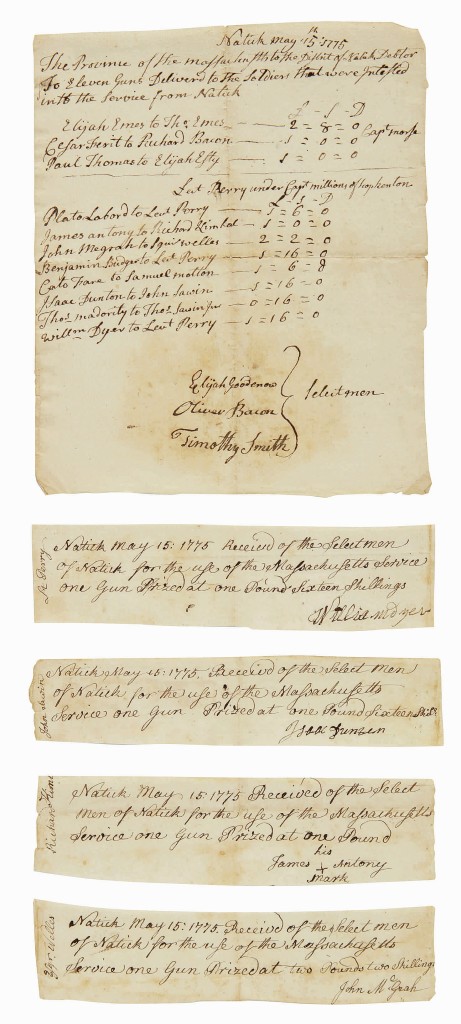
Fetching $25,000 were five Revolutionary War-era manuscript documents signed by some of the first African Americans to fight for the American cause, dated less than a month after Lexington and Concord, Natick, Mass., 15 May 1775.
The most valuable item crossing the virtual block in the auction was an autograph letter signed (“Go: Washington”) as Continental Commander to Bryan Fairfax, hoping for good news regarding the peace negotiations to end the Revolutionary War — not knowing the preliminary articles of peace had been signed two weeks earlier. The two-page document, which sold for $60,000, reveals a cold, tired and anxious commander at his Newburgh headquarters, wondering to one of his oldest friends if the next news from Great Britain will signal “the continuance of the war — or acceptance of peace.”
One of the finest signatures of John Hancock ever to be seen, on an important commission for a major general, was a notable highlight, selling for $27,000. Benjamin Lincoln’s commission as major general was signed by John Hancock as president of Congress on February 19, 1777. The partially printed broadside document, 8-5/8 by 13½ inches, on laid paper, was accomplished in a neat clerical hand, countersigned by Charles Thomson as secretary of Congress. Catalog notes state that Lincoln was recommended for his commission by George Washington himself. He came to Washington’s attention because of his skill in organizing and leading often poorly trained and equipped militiamen, particularly during the actions around New York City in the summer and autumn of 1776.
Fetching $25,000 were five Revolutionary War-era manuscript documents signed by some of the first African Americans to fight for the American cause, dated less than a month after Lexington and Concord, Natick, Mass., 15 May 1775. The primary document lists 11 troops, at least six of whom were Native or African American. Each soldier named is showing as owing varying amounts of money to other Natick residents (presumably as a deposit for the arms in question). Catalog notes point out that during this period, it is estimated that 20,000 African Americans joined the British campaign, which promised freedom to slaves, as Black Loyalists, and some 9,000 African Americans became Black Patriots. In total, around 450,000 soldiers and militia served the American cause, meaning that Black soldiers made up approximately four percent of the patriots’ numbers.
Two lots each brought $13,750, one of them having a rarity that nearly quadrupled its high estimate of $3,500. It was Georgia’s first newspaper, the Georgia Gazette, No. 148, Wednesday, July 23, 1766. The paper was founded by the colony’s first printer. James Johnston, a Scottish immigrant, began the weekly Georgia Gazette in April 1763. During the Stamp Act crisis, he suspended publication from November 1765, through late May 1766. This is the tenth issue printed after publication resumed and it includes several speeches from the Georgia legislature acknowledging the “magnanimity and generosity of the British Parliament” in repealing the Stamp Act.
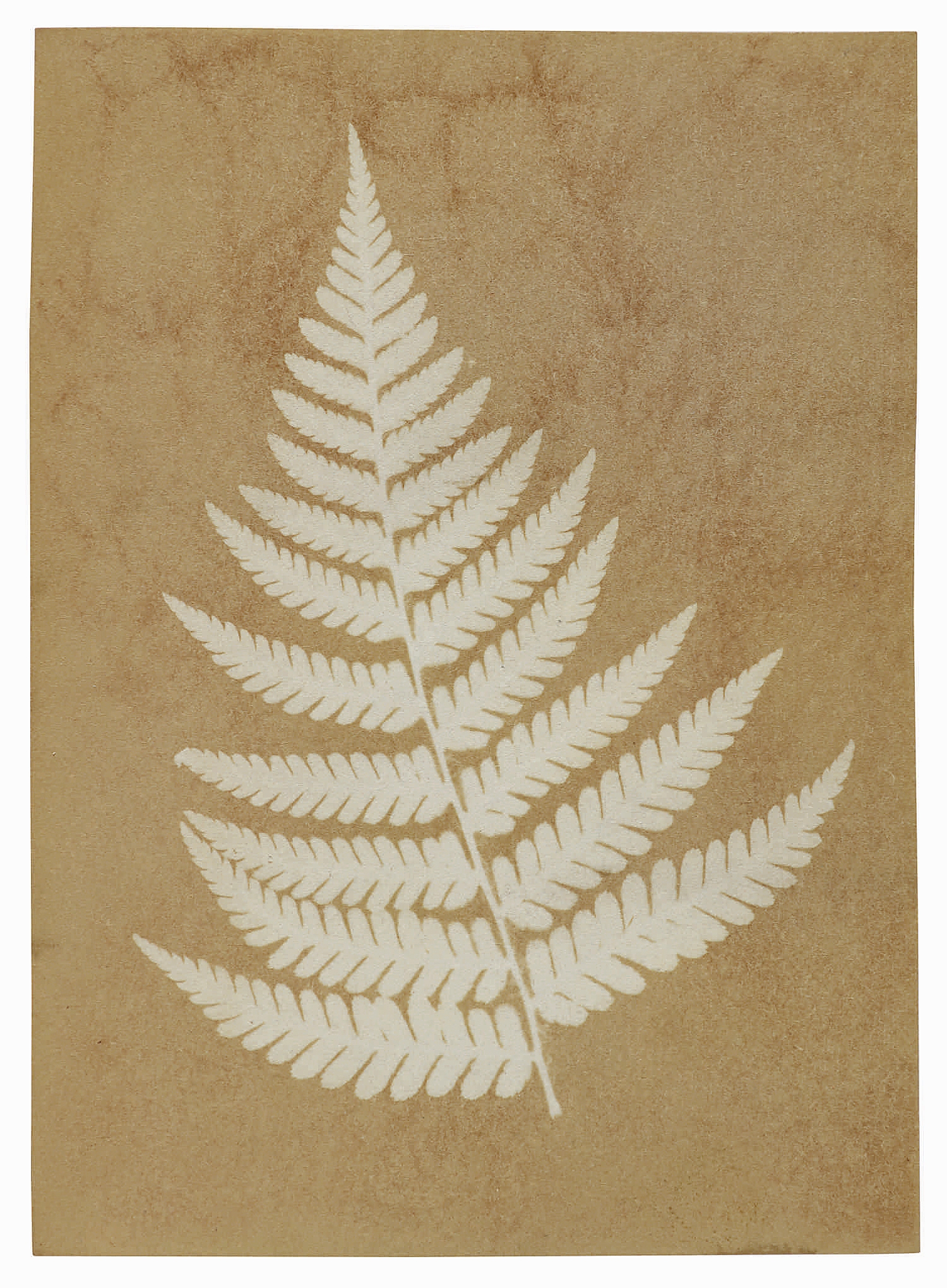
What is considered the earliest dated photograph, a December 2, 1839, image of a fern taken by the “Father of British Forensics” Alfred Swaine Taylor, was bid to $8,750.
The second lot to pull in $13,750 was a partially engraved document signed “James K. Polk” as 11th president, being an order to secretary of state James Buchanan to affix the Seal of the United States on the first formal treaty between the United States and China. The Treaty of Wangxia was the first formal agreement between the United States and the Qing empire, and functioned as an American counterpart to the Anglo-Chinese Treaty of Nanjing that ended the First Opium War in 1842. In effect, the treaty granted the United States privileges to purchase land in the five treaty ports, and to learn Chinese (an act previously forbidden to foreigners).
With the familiar and dramatic image of the Boston Massacre as its frontispiece, Boston’s official investigation of the event, which occurred on March 5, 1770, realized $10,625. The day after the Boston Massacre, the town meeting pressured Governor Hutchinson to remove British troops to an island in Boston Harbor. The meeting ordered the preparation of an account of the massacre and began taking depositions, appointing a committee of Bowdoin, Warren and Pemberton to investigate the event. That committee offered the “short narrative on March 19, which includes as an appendix some 96 affidavits of relevant witnesses. The meeting approved the account and ordered it printed, with copies to be delivered to England. Distribution of the Boston edition was at first suppressed, so as not to prejudice the trial of the soldiers, but it was announced in the Boston Evening Post of 16 July that a pamphlet was to be printed “from the London edition.” By the next week it was widely available.
Another “first” surfaced in the guise of the first English-language newspaper in China, a rare copy of the paper that was published in Canton (now Guangzhou) from 1827 to 1843. Canton Register, Volume 7, number 1–volume 8, number 52. Canton, China, 7 January 1834-29 December 1835 went out at $9,375.
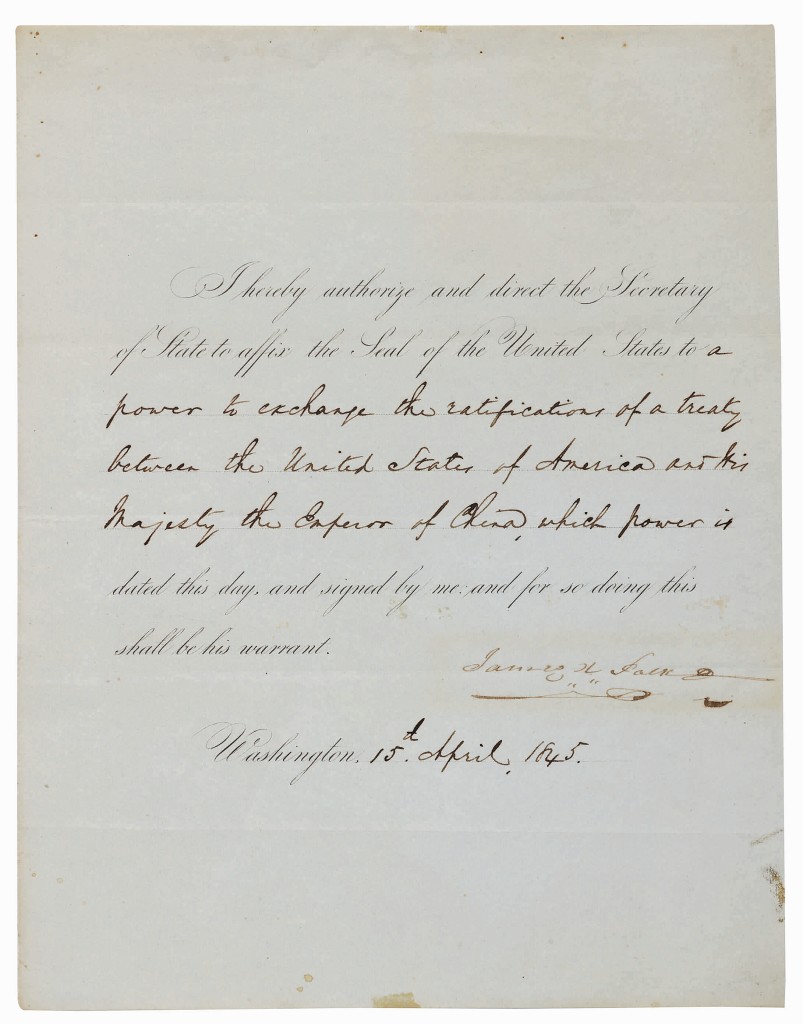
A partially engraved document signed “James K. Polk” as 11th president, being an order to secretary of state James Buchanan to affix the Seal of the United States on the first formal treaty between the United States and China earned $13,750.
Vying for best performing sleeper in the sale was what is considered the earliest dated photograph, a December 2, 1839, image of a fern taken by the “Father of British Forensics” Alfred Swaine Taylor. More aptly categorized as a “photogenic drawing,” the image was bid to $8,750.
Rounding out the sale’s top ten highlights were an autographed letter by Continental Army Major General Charles Lee regarding the Battle of Bunker Hill, Cambridge, 20 July 1775, which finished at $7,500; and a Book of Common Prayer, London: Richard Jugge, bound with The Whole Booke of Psalmes, Collected into English Meter. London: John Day, 1575, which earned $6,875.
Contacted after the sale, Caren said, “The results were entirely unpredictable. Years ago, I would have had a better sense of what would sell, what wouldn’t sell. The market is very unpredictable now.”
Still, Caren said he was satisfied with the gross. And while he puts together the ninth sale from his archive — auction house TBD — he is concurrently putting together a six-volume history of the United States — from Columbus to the computer age — using thousands of images from his archive, some never seen before. He is currently looking for a publisher, he said.
Prices given include the buyer’s premium as stated by the auction house. For information, www.sothebys.com or 212-606-7000.

